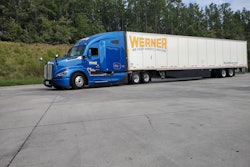Sustainability has a branding problem.
Marketing is all about product recognition. Icons like Pepsi, Coca-Cola, Apple, Tesla, Werner, Schneider, Knight-Swift, Ryder, Penske, Amazon, etc. are all easy to see. I’ve come to the conclusion that the primary problem with reducing emissions is that the majority of people just can’t visualize carbon dioxide (CO2).
Media coverage of catastrophes like tornados, hurricanes, tsunamis, volcanoes and earthquakes make those physical events real to everyone. A picture is worth a thousand words, or maybe now a million with inflation. Carbon dioxide and its effects are just hard to immediately visualize.
Measurements of thousands and millions of tons of CO2 are ubiquitous in press releases, news interviews and policy papers. The scale of these numbers is almost numbing. How do you visualize a million tons of CO2? How do you relate to that?
The measurement of CO2 is typically also stated in metric tonnes, often not clarified in the headlines. A U.S. ton is 0.91 of a metric ton, also stated as tonnes.
An example of visualization is the recent torrential rains in the Dallas-Fort Worth region. As much as 15 inches of rain fell in one 24-hour period in some locations. Averages over the entire metroplex region exceeded 9 inches as reported by CBS. That much water and its damaging effects are readily visible. Images and videos were broadcast all over the world.
The same day, I interviewed a freight company touting its aggressive sustainability goals. Their published plans are to reduce emissions by an additional 700 million pounds of CO2 a year by 2030. How do you visualize that? Is that a big number, a small number, or something in between? What do you picture in your mind when you hear or read these seemingly large numbers?










